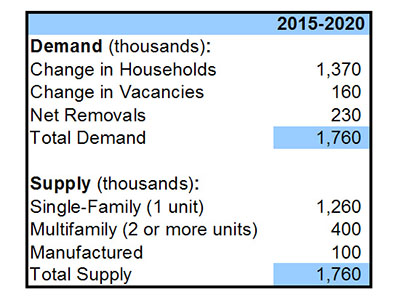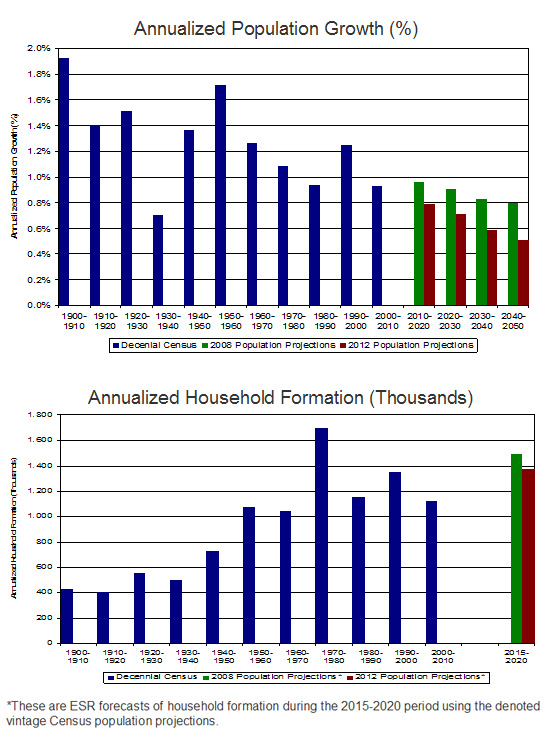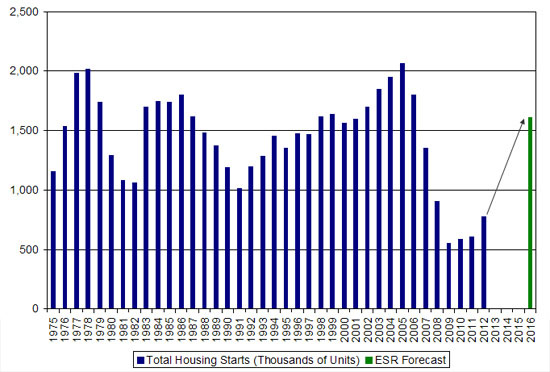Transitioning to “normal”: What does a healthy housing market look like and how far off is it?

The housing market improved significantly in building activity, sales, and prices in 2012. However, these indicators remain at depressed levels, not only in comparison to the housing bubble period in the mid-2000s, but also in comparison to the more stable housing market of the mid- to late 1990s. Consider the following measures of housing activity:
- Housing starts totaled 780,000 units in 2012. Prior to the peak of 2.1 million units reached in 2005, the all-time lowest annual housing starts level was 1 million units in 1991.
- Existing home sales totaled 4.66 million units in 2012. While sales were about 13 percent above their previous annual trough in 2008, they remained at a historically depressed level.
- The 367,000 new home sales in 2012, although an improvement from 2011 when new home sales reached the all-time low, was lower than any pre-housing bust level on record.
- The CoreLogic National House Price Index rose 8.3 percent in 2012, but the year-end level was 27 percent below the 2006 peak and consistent with house prices last seen in 2003.
- Manufactured home placements totaled approximately 51,000 units in 2012, only slightly above the record low reached in 2011.
These are just a few examples of housing market conditions that, while rebounding above recent crisis-induced levels, remain depressed. This begs two questions: 1) what is a “healthy” or “normal” U.S. housing market? and 2) how long will it take us to get there? While there are many aspects of a healthy market, this commentary focuses on sustainable levels of new production of housing units to meet future demand. We deem this sustainable level as representing normal housing production.
In Figure 1, we lay out our forecast of the normal level of housing supply required to meet the trend level of housing demand. Our forecast indicates that homebuilding will reach normal activity by 2016.
Figure 1: Demographic factors and historical trends suggest an annual average demand for nearly 1.8 million new housing units in the second half of the decade.

Source: Fannie Mae Economic and Strategic Research
Housing Demand Growth
The central determinant in forecasting the normal level of housing production is to derive future housing demand. We forecast a trend level of demand during the second half of the decade of 1.76 million units per year, which derives from three major components1:
1) Household Growth: Household formations are the largest component of incremental demand for housing units. Annual household formation—the number of net new households generated each year—slowed from nearly 1.4 million during the first half of the 2000s to less than half a million during the housing bust. We expect an average of slightly below 1.4 million net new household formations each year from 2015 through 2020. To derive our household projections, we apply our forecast of headship rates—the rates at which population in various age groups form into households—to the Census Bureau’s population projections. Our projections are based on the Census Bureau’s 2012 National Population projections released last December in which the Census Bureau significantly downgraded its outlook for population growth in coming decades, largely due to more moderate immigration projections. Had we used the Census Bureau’s more optimistic 2008 population projections, our projected annual household increase would have been roughly 1.5 million, other things remaining equal (see Figure 2).
Figure 2: A downgrade in Census Bureau population projections leads to a softer forecast of trend household formation.

Source: Census Bureau, Fannie Mae Economics and Strategic Research
2) Change in Vacancies: Growth in vacant housing units is the second component of new housing demand forecast. Additional vacant housing units are required in a growing housing market to satisfy new demand for vacation and second homes, as well as to accommodate movement and ensure smooth functioning of the market. Based on our household forecast, and the historical relationship between households and vacancies, we expect annual growth in vacant units to reach approximately 160,000 units during the second half of this decade.
3) Net Removals: The final component of new housing demand, net removals of housing units from the stock, comprises multiple distinct flows including demolition of obsolescent housing; losses due to natural disasters, fires, and similar events; combinations or subdivisions of existing housing units; and conversions of structures to and from residential use. We calculate net removals using a residual method that subtracts the change in the housing stock between decennial censuses from total housing production. Based on this approach, we expect annual net removals to account for approximately 230,000 units of new housing demand by the second half of this decade.
New Housing Production
During the mid-2000s housing bubble, residential construction outpaced fundamental demand for housing, creating an excess supply of housing units. In the aftermath of the bubble, new construction fell more than new housing demand, resulting in absorption of some of the excess supply. By the second half of the decade, we expect the excess supply to be worked off and to return to an environment where new housing demand and housing production are aligned. After three straight years of averaging roughly 600,000 units, housing starts rebounded to 780,000 in 2012. As household formations accelerate and excess supply is absorbed, total housing starts will trend to nearly 1.7 million units annually, with manufactured homes expected to meet the rest of the housing demand, driving overall housing unit production to almost 1.8 million units (Figure 3).
Figure 3: We expect total housing starts to trend toward nearly 1.7 million units by 2016.

Source: Census Bureau, Fannie Mae Economic and Strategic Research
During the recession, mortgage defaults and tighter lending standards drove the decline in the homeownership rate from its peak. Now, a larger share of newly-formed young adult households, in addition to recently foreclosed-upon households, will likely rent for some time before owning, as tight lending standards are likely to persist. Thus, we expect the single-unit share of total new production to be lower than the previous decade prior to the housing bust.
In conclusion, the housing market experienced a once-in-a-generation boom/bust cycle in the last decade from which it will take several more years to fully recover. We tentatively target 2016 as the year in which the housing market will once again be “normal,” marking a full 10-year transition process from when the market first collapsed in 2006. We expect some volatility in this transition as the market moves from depressed levels toward a more healthy and stable framework. This transition continues to be a bumpy move from a market first dominated by excess, then restructuring and repair, and finally a return to demographic demand fundamentals.
Brian Hughes-Cromwick
Economist, Business Strategy
Economic & Strategic Research
March 14, 2013
Opinions, analyses, estimates, forecasts and other views of Fannie Mae's Economic & Strategic Research (ESR) group included in this commentary and related Housing Insights should not be construed as indicating Fannie Mae's business prospects or expected results, are based on a number of assumptions, and are subject to change without notice. How this information affects Fannie Mae will depend on many factors. Although the ESR group bases its opinions, analyses, estimates, forecasts and other views on information it considers reliable, it does not guarantee that the information provided in these materials is accurate, current or suitable for any particular purpose. Changes in the assumptions or the information underlying these views could produce materially different results. The analyses, opinions, estimates, forecasts and other views published by the ESR group represent the views of that group as of the date indicated and do not necessarily represent the views of Fannie Mae or its management.
The views expressed in these articles reflect the personal views of the authors, and do not necessarily reflect the views or policies of any other person, including Fannie Mae or its Conservator. Any figures or estimates included in an article are solely the responsibility of the author.
1 For details on our methodology and assumptions of individual demand components please see the Appendix.
